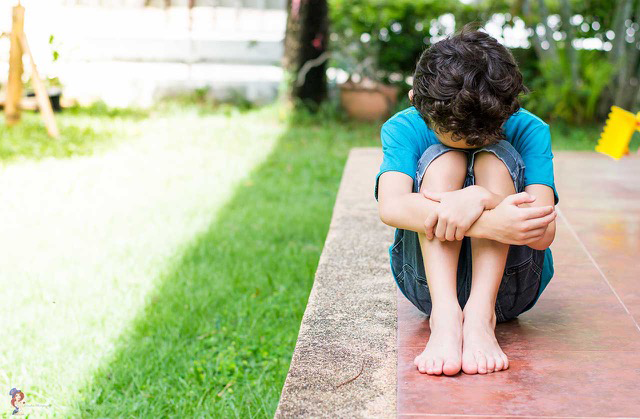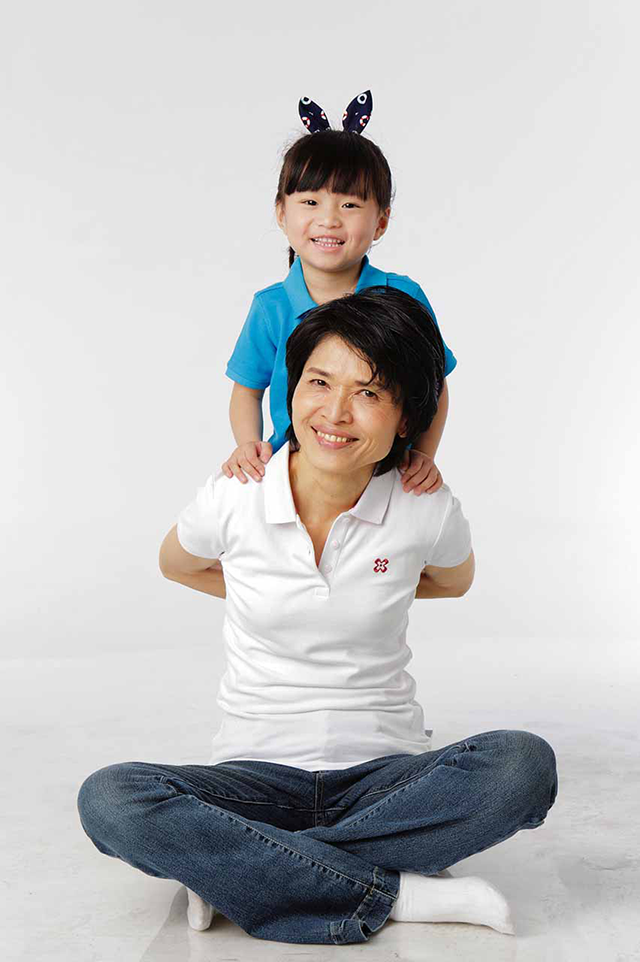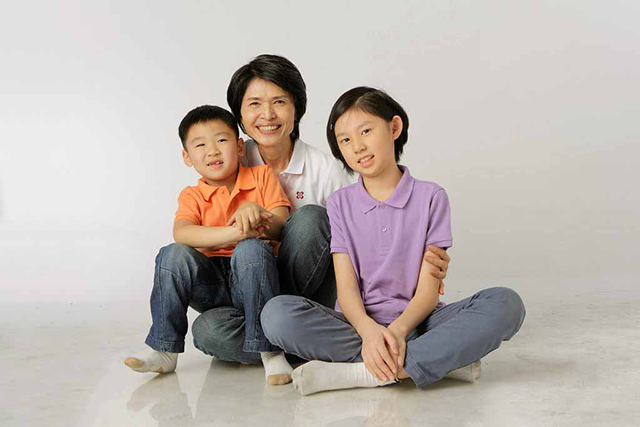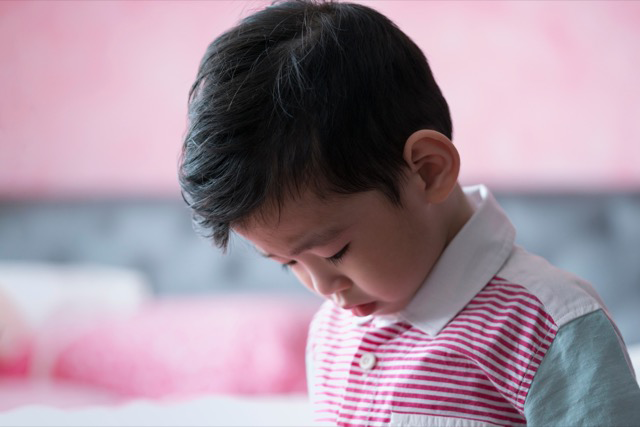Characteristics of Autism in Children and 8 Treatment Methods

What is Autism?
With over 50 years of professional experience, I have gained a deep understanding of the uniqueness of children with autism and the challenges they face. As a long-term practitioner in autism therapy for children in Taiwan, we are dedicated to providing professional treatment programs and offering continuous support and companionship throughout the children’s growth. I firmly believe that improving the abilities of children with autism requires long-term collaboration, ongoing observation, and adjustment among parents, the children themselves, and professional institutions.
Characteristics of Children with Autism
Children with autism may behave differently from other children. They might exhibit the following behaviors:
- Repeating the same actions or thoughts over and over again: this repetitive behavior is a typical characteristic of autism and may manifest as fixed habits or intense interests.
- Difficulty communicating and interacting with others: these children often find it hard to engage in effective communication through verbal or non-verbal means.
- Difficulty understanding others’ thoughts or feelings: they often struggle to perceive and comprehend the emotions and intentions of others.
- Difficulty tolerating bright lights or loud noises: certain environmental stimuli may cause them stress or discomfort.
- Feeling anxious or uneasy in unfamiliar situations and social activities: new environments or social settings may cause them significant distress.
- They need more time to understand communication: their language comprehension is generally slower, and they may require additional time to process information.
Tuanwen Wu’s Narrative: At the Forefront of Autism Treatment

Throughout my 50-plus-year career, I have remained dedicated to the treatment and education of children with autism. I firmly believe that improving the abilities of children with autism is a process requiring long-term collaboration, continuous observation, and adjustment among parents, the children themselves, and professional institutions. Kickstart Clinic is committed not only to providing professional treatment programs but also to offering long-term companionship and support throughout the children’s growth.
- Master’s Degree in Special Education from the University of California, Los Angeles (UCLA)
- Founder of KickStart Occupational Therapy Clinic
- Chief Executive Officer (CEO) of KickStart Sensory Integration Education Co., Ltd.
- Awards and Honors: Outstanding Occupational Therapist Award, Taiwan Occupational Therapist Association, 2012; 8th National Early Intervention Palm Award for Outstanding Professionals in Developmentally Delayed Children; Service Award, Taiwan Occupational Therapist Association
- Publications: Sensory Integration; Freeing the Smart “Slow” Child; Skillful Hands; Exercise Transforms a Child’s Future (Editor and Reviewer)
- Lecturer and Evaluation Committee Member for Early Intervention Professional Training, Taipei and New Taipei City Departments of Health, Social Affairs, and Education, as well as Occupational Therapy Associations
- Contracted Lecturer for the Departments of Health, Social Affairs, and Education of Taipei City and New Taipei City
- Expert Committee Member for the Early Intervention Service Indicator Development Project, Health Promotion Administration, Ministry of Health and Welfare
- Supervisory and Evaluation Committee Member for Early Intervention Medical Institutions, Department of Health
Professional Experience and Contributions
In 2018, Professor Tuanwen Wu and his team at KickStart Sensory Integration were honored with the National Brand Yushan Award for Best Product. This prestigious award highly recognizes Professor Wu’s selfless dedication over many years in the field of sensory integration therapy.
Professor Wu deeply understands that improving the abilities of children with autism requires more than professional treatment; it demands patience, love, and continuous companionship. He is committed to using scientific methods combined with compassionate care to help every child with autism and their family emerge from darkness and move toward a brighter future. This sense of mission continues to guide him and his team forward.
Autism in Children Is Not a Disease
Autism does not mean that a child has a disease. My perspective is that autism is the brain working in a different way from others; it is an innate characteristic that may become apparent when the child is very young. If a child is autistic, this trait will accompany them throughout their life. However, with early diagnosis and intervention, symptoms can be improved, quality of life can be enhanced, and the child will have a better chance of integrating into society in the future.
Children with autism can lead fulfilling lives.
Autism does not necessarily prevent children from living a good life. Like everyone else, individuals with autism have their strengths as well as challenges. Autism does not mean that a child will never be able to make friends, build relationships, or find a job, but they may need extra support to manage these aspects. Through professional therapy and compassionate care, we can help children with autism lead fulfilling and meaningful lives.

According to the American Psychiatric Association (APA) in the 2013 publication of the Diagnostic and Statistical Manual of Mental Disorders, Fifth Edition, Revised (DSM-5®), the diagnostic term “Autism Spectrum Disorder” (ASD) includes autism, Asperger’s syndrome, and other pervasive developmental disorders not otherwise specified (PDD-NOS).
The causes of autism in children are currently not well understood.
The exact causes of autism in children are still unknown, and it remains unclear whether there is a single cause. However, we do know that autism can affect multiple members within the same family and may sometimes be inherited from parents.
What is known is that autism is not caused by the following:
- Parenting Style
- Vaccination
- Dietary Habits
- Contact with others
These views have no scientific basis and therefore should no longer be considered as causes of autism. Understanding this is very important because only by dispelling these misconceptions can we more effectively support and help children with autism and their families.
Autism in children is not related to intelligence
In my clinical experience, I have observed that autism is not related to intelligence.
However, some individuals with autism may have learning disabilities. This means they might find it difficult to take care of themselves and may require additional support in daily life.
Children with autism may have co-occurring conditions.
In my clinical experience, I often encounter many children with autism who frequently have other co-occurring conditions alongside autism. For example, some children also exhibit symptoms of Attention Deficit Hyperactivity Disorder (ADHD) or dyslexia; others may be prone to anxiety or depression. Additionally, a portion of children with autism may have epilepsy. The coexistence of these conditions makes each child’s needs very unique, so during the treatment process, we must carefully observe and respond flexibly.
Sharing of Autism Case Studies in Children
Xiaoguang with Low Responsiveness

I clearly remember Xiaoguang’s situation. Xiaoguang is a little over three years old and has autism. He is the only child in his family. At first, his father believed that Xiaoguang was no different from other children and that everything was perfectly normal. It wasn’t until one day, after Xiaoguang started kindergarten, that the teacher recorded his behavior at school. I still remember the moment Xiaoguang’s father watched that video—he was shocked to realize that Xiaoguang might show signs of autism. This discovery was undoubtedly a significant blow to the family.
Xiaoguang, who is unresponsive and not good at speaking
Xiaoguang caught my attention right from the beginning. Compared to other children who were full of curiosity and eager to explore, Xiaoguang always stood quietly to the side, staring blankly as if he couldn’t engage with the other kids. He didn’t laugh joyfully or respond enthusiastically like his peers. I noticed that he might not know how to interact with others, or perhaps he was simply less responsive to his surroundings—something that was also reflected in his behavior at school.
During the first therapy session, I observed that Xiaoguang’s gaze was somewhat vacant and unsteady. However, he showed a remarkably strong interest in symbolic objects, which was quite striking. He struggled with interpersonal communication and had a noticeably low response to sensory stimuli. This further confirmed my suspicion that he might have challenges with sensory integration.
Xiaoguang’s language skills were also quite limited. When his father called his name, he often seemed indifferent. That made me realize I would need to address his difficulties from multiple angles. In the early stages of therapy, I spent a considerable amount of time observing Xiaoguang and having in-depth conversations with his father to explain the therapeutic approach we planned to use.
I firmly believe that Xiaoguang has the potential to improve. That’s why I offered some suggestions for sensory integration activities that could be done at home, hoping his father would actively participate in his development. Not only do I believe these activities will help Xiaoguang, but I also understand deeply that family support plays an indispensable role in a child’s rehabilitation. I encouraged his father not to give up, because with our joint efforts, I believe Xiaoguang can—and will—make progress, perhaps even in ways that surprise us.
Gradually Opening the Door to His Inner World
As time went on, I provided Xiaoguang with weekly sensory integration therapy, continually adjusting the activities based on his condition and setting new goals along the way. From the distant little boy he once was, Xiaoguang gradually transformed into the “big brother” figure in his kindergarten class. Witnessing this growth has been incredibly heartwarming.
Through consistent sensory integration therapy, Xiaoguang began to show significant progress. He slowly learned to understand emotional expression and became more willing to explore new things—a major breakthrough for him. Now, whenever his father comes to pick him up, Xiaoguang is able to greet me on his father’s cue, sometimes even with a smile on his face. Such a simple action was once extremely difficult for him, but now, he does it naturally and happily.
In the therapy room, his behavior has also changed remarkably. He has started to actively explore various activities, no longer focusing solely on symbolic objects. His eye contact has become more stable, and he can now engage in brief interactions with me and others. He has become more responsive to both his environment and the people around him, even showing an ability to understand his father’s words and emotional cues. This has led to a more harmonious interaction between them.
Seeing Xiaoguang progress from where he started—gaining emotional expression and a desire to explore—has strengthened my belief that with continued effort, he has a bright future ahead. I also believe that this therapeutic journey has not only had a profound impact on Xiaoguang but has also brought about a significant transformation for his family. I will continue to work closely with his father to support Xiaoguang in realizing his potential and to walk alongside him through this important stage of development.
Challenges Encountered During the Sensory Integration Therapy Process
During the therapy process, I noticed that Xiaoguang encountered several challenges. He became more stubborn and began refusing to participate in certain sensory integration activities, preferring instead to play with toys he was personally interested in. Whenever he faced setbacks, he would easily become emotional and cry, which added to the difficulty of the therapy.
To overcome these obstacles, I focused more on developing Xiaoguang’s willingness to cooperate and helping him adapt to school routines and expectations. I carefully planned the difficulty and progression of each activity, making flexible adjustments based on his condition. At the same time, I placed emphasis on training Xiaoguang’s cognitive flexibility and tolerance for frustration. Through appropriate proprioceptive activities, I aimed to gradually improve his level of cooperation.
Aligning with the Child’s Interests and Providing Gradual Guidance
During this process, I discovered that Xiaoguang had a unique interest in numbers. Based on this, we designed activities around this theme, which yielded quite positive results. Additionally, we made an effort to synchronize the therapy activities with what Xiaoguang was learning at home and at school to ensure continuous progress across different environments.
As Xiaoguang’s cooperation and emotional stability gradually improved, we were able to introduce more types of new activities. For example, he now practices core-strengthening exercises like “cradling a small egg” and coordination-enhancing movements such as “crossing the midline.” Xiaoguang’s progress at school has also become very noticeable—tasks he once needed help with, he can now complete on his own!
Demonstrating Results: Reducing Autism Tendencies in Children
That day, I received a message from Xiaoguang’s father sharing his performance at the kindergarten graduation showcase. The message mentioned that Xiaoguang participated in various performances such as a play, flute playing, and dancing. The program was complex and required lining up neatly and stepping out of the group to deliver lines. Although I knew he wasn’t very fond of performing, he still completed the entire show steadily, which made me feel incredibly proud!
Seeing the pride in his father’s message, along with the photos of Xiaoguang performing seriously and confidently, filled me with deep emotion. Suddenly, I felt that all the past effort and dedication had truly been worth it. To witness Xiaoguang demonstrate his growth and confidence on such an important occasion, as his teacher, I feel immensely gratified and grateful.

Therapeutic Approach
When working with “children of the stars” (children with autism), I deeply understand that each child’s situation is unique. Therefore, my focus in managing autism is to help the child improve their current condition and strengthen their self-care abilities.
Children with autism often face challenges such as emotional difficulties, social struggles, anxiety, sensory integration disorders, and language impairments. As a therapist, I assess the root causes of these symptoms based on each child’s specific situation. Then, I engage in in-depth communication with the parents to understand which areas they most wish to improve. Based on this, I design the most suitable therapy program tailored specifically for the child.
My goal is to ensure that every child receives effective support where they need it most, helping them gradually improve their quality of life, build confidence, and move toward a more independent life.
Introduction to Autism Therapy for Children
When working with each child, I fully understand that their conditions vary individually, so I do not use a fixed therapy package for treatment. The therapy I provide is tailored according to each child’s specific needs. Below, I will introduce several therapy approaches I often use (but are not limited to), which have demonstrated significant effectiveness in many children.
Tactile Energy Massage
I often use tactile energy massage because it provides children with tactile and pressure input, which helps improve their neural regulation and stability. Through this type of massage, I have observed many children experience better sleep quality, enhanced language skills, more stable emotions, and even significant progress in social skills.
Tactile Integration Massage
I also frequently use tactile integration massage, a technique that provides tactile, pressure, and proprioceptive input to various parts of the child’s body. This massage promotes brain development and helps with reflex integration and sensory integration functions. For children who have strong sensory defensiveness, this therapy is especially effective—it not only reduces sensory defensiveness but also enhances emotional stability and a sense of security, helping them perform better in learning and social interactions.
Brain Gym
Brain Gym consists of a series of specialized movements designed to stimulate the development of different areas of the brain. I have found that these exercises can effectively improve children’s learning abilities, helping them stay more focused and confident during the learning process.
Sensory Integration
Sensory integration plays a crucial role in child development. I often emphasize to parents and teachers that understanding the existence and importance of sensory integration is the first step in promoting it for children. With this awareness, parents and educators can create a rich sensory environment for the child, which is essential for their healthy growth.
Therapeutic Listening
Therapeutic Listening is a treatment method that uses music, and I often combine it with sensory integration activities. This therapy can effectively improve a child’s attention, behavioral organization, self-regulation, posture control, and bilateral coordination. Additionally, it helps enhance motor skills, fine motor control, oral motor function and speech articulation, social interaction skills, communication abilities, and even visual-motor integration.
Integrated Auditory System Therapy Program
I often use the Integrated Auditory System Training Program, a specialized sensory input training series designed to simultaneously stimulate a child’s vestibular sense, auditory system, vision, motor skills, and cerebellum. This program includes three different courses: the Brain-Ear Course, the Visual-Balance-Coordination Course, and the Interactive Language Course. Each course is uniquely designed to address different developmental needs of the child.
Neuro-Reflex Integration Therapy
I also frequently use this “Neuro-Reflex Integration” technique. By properly integrating neural reflexes, it promotes sensory processing, emotional recovery, motor physiology, and sensory-motor rehabilitation in children. This approach is especially effective for children with neurodevelopmental challenges.
Children’s Yoga / Special Needs Children’s Yoga®
In addition, I have designed specialized yoga classes for children, especially Special Needs Children’s Yoga®. These exercises help improve emotional issues, enhance focus, boost social skills, and promote physical development. I have observed that through these yoga sessions, many children have shown significant improvements in their quality of life and learning performance.
These therapy programs are effective methods I have developed through years of teaching and clinical practice. However, I fully understand that every child is unique, so I adjust the programs flexibly based on each child’s specific needs to achieve the best results.